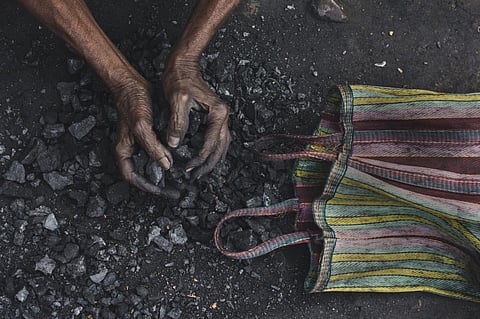Coal crisis: Why Delhi’s coal stock is critical & what other states are doing
Delhi has warned the Centre of the power outages for metro rail and hospitals due to coal shortage at its thermal power plants. Only a day’s stock of coal is left with several of these plants that supply power to the capital, according to sources.
Satyendra Jain, the power minister of the state, has reportedly written to the Centre, intimating them of the situation and requesting them to ensure coal allocation to plants that supply power to the state. The request was made especially for supply to ones at Dadri and Unchahar that contribute to 25-30 per cent of the total power demand in Delhi.
Delhi currently generates 1,107 megawatts of electricity and imports 4,154 MW from the neighbouring states. The current crisis can be attributed to the interrupted coal imports and unexpected power demand due to heatwaves that the coal utilities did not envisage, said Ashu Gupta, retired general manager of NTPC Ltd.
In order to address this coal shortage, the power ministry has taken some ‘emergency measures’ to ease the supply of coal to the power plants. They are:
- A major government decision to rely less on imported coal was reversed as the private players have now been directed to ‘step-up’ coal imports for next three years, according to a statement by Union Power Minister RK Singh. The limit to blend imported coal with domestic coal also has been relaxed to 10 per cent from 4 per cent earlier to decrease stress on domestic coal supplies
- To address the issue of high tariffs on imported coal, the ministry has allowed private power plant players that rely on imported coal for power generation to pass on the cost till December 31, 2022, thus effectively restarting electricity generation capacity of 7,980 MW
- The Centre also allowed states to use its captive coal reserves up to 25 per cent to meet the surging coal demand. It also cancelled some passenger trains to make way for coal carriages
The power demand in the country touched 201 gigawatts on April 26, 2022 and the cost of imported coal has almost doubled to Rs 8-10 per unit of electricity generated from Rs 4-5 earlier, said Peddanna Ramayanam, plant head of JSW Ratnagiri Thermal Power Plant.
The climate anomaly leading to the early onset of heatwaves in India has had an unprecedented effect on the power supply planning, leading to long power cuts in many regions and uncertainty in continuous power supply in others.
Solutions from other states
Tamil Nadu, Gujarat, Maharashtra, Uttar Pradesh, Haryana also have been reeling under this coal power shortage. “This sudden electricity shortage has come due to precipitous rise in demand in summers that couldn’t be met with the present electricity generation,” said the superintendent-engineer of Theni District Electricity Board who did not wish to be named.
Electricity demand is high in almost all the neighbouring states of Tamil Nadu. Thus, purchasing power from them has been rendered impossible. So, the current shortage prevailing in the state is being met by purchasing power from private generators at a much higher cost.
The hike in private electricity cost is the reflection of the sudden surge in power demand in the state, the engineer claimed. The situation will improve in the upcoming months with the subsequent rise in wind power generation, he added.
The surging electricity demand has also led to some of the states turning to idle utilities or plants that were not in operation. Tamil Nadu has restarted its 600 MW Coastal Energen thermal power plant that was not operational till March 28, 2022, as its undergoing bankruptcy resolution.
Similarly, the Gujarat government has also placed orders to import coal for its 500 MW Sikka coal thermal power plant that was shut for the past 7-8 months due to shortage of coal, according to Pradip Gagiya, environmental engineer, Sikka Thermal Power Station.
The Maharashtra government has also approached the underutilised plants in Warora and Nasik to tackle the growing crisis.
National crisis
Last year, India’s maximum electricity demand was 200.539 GW on July 7. This year, the country has already hit this demand in April.
Usually, plants maintain a coal stock of approximately 21-26 days. However, Central Electricity Authority’s (CEA) daily coal report shows that as of April 29, 2022, as many as 100 plants out of the 165 operational were at critical storage stage — they have less than 25 per cent of the required stock. This translates to less than seven days of coal stock.
CEA has primarily listed ‘less supply from mines’ and ‘shortage of railway rakes’ as two major reasons for this acute coal shortage at thermal power plants.
Twenty-one percent of the plants are to procure coal via rail-cum-road (RCR) mode. However, CEA has not made it clear as to why there is a shortage of coal in these plants.
Twelve per cent of the plants rely on imported coal. High price of imported coal and disrupted supply chain has affected the coal stocks at these plants.


